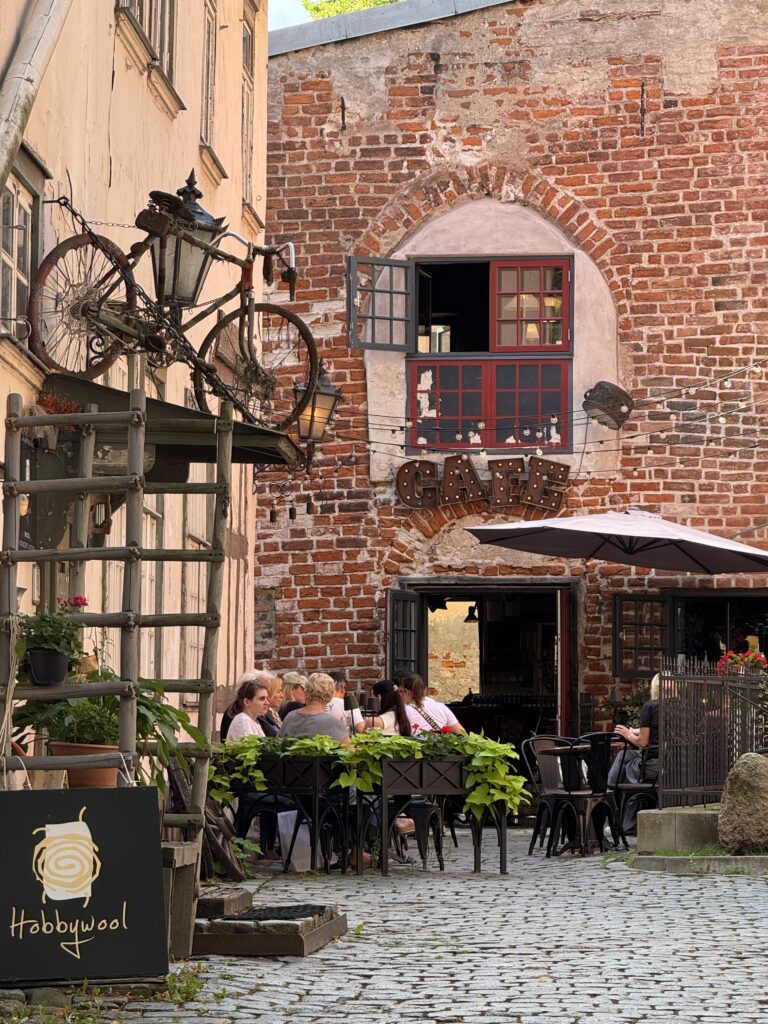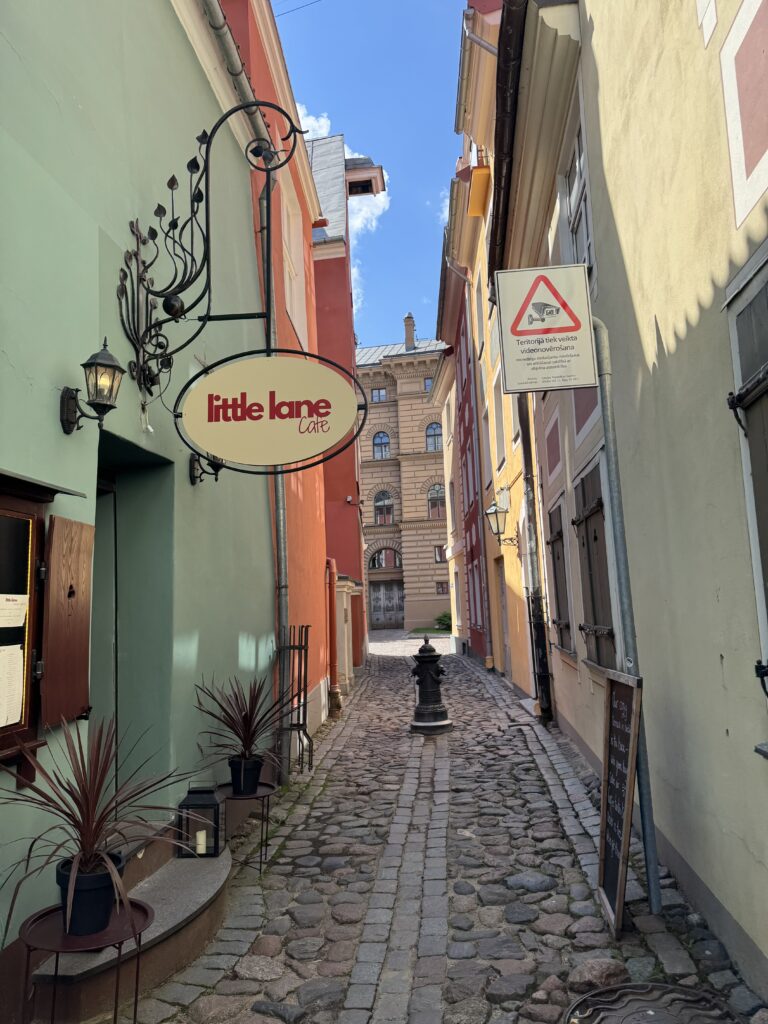Surrounded by Riga’s pastel facades and lively Old Town, the Museum of Occupation stands out – an unadorned brown box hiding a nation’s toughest stories.
Unsurprisingly, the building itself was constructed during Soviet rule, and while I had expected to see more of those typical large, bland, functional Soviet-style buildings, this was actually the only one I saw in the city centre.
I hadn’t planned to step inside, but sometimes the best discoveries happen when you let someone else lead the way.

First Impressions – An Unusual Choice for a Non-Museum Traveller
I’ll be honest: museums aren’t my usual travel priority. But this time, my travel buddy had done the research and insisted the Museum of Occupation was unmissable. Sometimes, it’s refreshing to let someone else steer the itinerary.

The museum’s location is hard to miss – right in the heart of Riga’s Old Town, surrounded by a patchwork of beautifully restored, colourful buildings and chic cafes. The contrast couldn’t be more striking. The museum itself is a plain, square brown box – almost purposefully bland amid the city’s charm. Yet, once inside, the space feels unexpectedly modern and clean, with sharp lines and a minimalist layout that sets the stage for what’s to come.

Recent History Comes Alive – What Makes the Museum Stand Out?
Unlike many European museums that focus on ancient or medieval history, the Museum of Occupation tells Latvia’s story from 1939 onwards. You’re drawn into the decades following Latvian independence, through Soviet and Nazi occupations, and up to the country’s hard-won independence in 1991.
What made this museum especially compelling for me was the tangible sense of how recent this history is. Photographs of families, maps showing the forced deportations to Siberia, and everyday objects from the Soviet era make these stories feel immediate – this isn’t distant history but living memory for many Latvians.
I found myself lingering over displays that charted the paths of those sent into exile, imagining families torn apart as entire communities were relocated to the far reaches of Russia. The museum doesn’t shy away from the complexities of occupation, either – it openly addresses the atrocities and hardships endured, but also the complicated reality that, even today, nearly a quarter of Latvians identify as Russian.
The Museum’s Delicate Balancing Act
One of the most thought-provoking aspects of the museum is how it navigates Latvia’s ongoing relationship with Russia. With the current war in Ukraine, most Latvians support Ukraine – but there’s also a significant Russian-speaking minority, influenced by Russian media and history. The museum faces the challenge of presenting tough truths about the past while acknowledging the diversity of present-day Latvia. It’s a nuanced, sometimes uncomfortable, but always honest conversation.
A museum normally documents the past. In this case, it could be the other way around. Putin’s threats to the Baltic states make the displays in the Latvian Occupation Museum seem like a prediction of what could happen again
International Society for Human Rights
Who Should Visit the Museum of Occupation?
Surprisingly, this museum’s appeal is broad:
Families: There are child-friendly displays and accessible explanations for younger visitors.
Expats & New Residents: Members of my group included a Yorkshireman working on a local railway project and a Swiss language enthusiast learning Russian and the Russian culture – both found layers of insight relevant to their personal journeys.
History Buffs & Politically Curious: If you want to understand the forces shaping today’s Europe, especially in light of current events, this museum is essential.
Anyone Who Wants to Learn From the Recent Past: I’d even recommend it to political leaders (Donald Trump, are you listening?) who could benefit from seeing firsthand what “Russian rule” means.
Practical Tips – How to Get the Most Out of Your Visit
Choose Your Own Adventure: Whether you prefer to read at your own pace, soak in the images, or use the comprehensive audio guide (about 90 minutes long), there’s flexibility in how you experience the museum.
Take the Guided Tour: My small group joined a guided tour with a local, which provided invaluable one-on-one conversation and context. If timing allows, this is by far the best way to connect the exhibits to real stories.
Allow Enough Time: Plan for at least 1.5 to 2 hours, especially if you take a guided tour.
Language Options: Exhibits are available in multiple languages, and the audio guide makes the museum accessible to non-Latvian speakers.
Location: The museum is centrally located in Riga’s Old Town, making it easy to add to any city exploration.
Be Ready for Complexity: The story isn’t always comfortable, but it’s an important one.
FAQs:
Q: Where is the Museum of Occupation located in Riga?
A: Right in the heart of Riga’s Old Town – an easy walk from most central hotels and landmarks.
Q: Is the museum suitable for children?
A: Yes, there are displays and explanations designed for younger visitors.
Q: How long should I plan for the visit?
A: A minimum of 1.5 hours, longer if time allows
Q: Are guided tours available in English?
A: Yes, guided tours in English are often available – check the schedule in advance or on arrival.
Q: Can I visit without prior knowledge of Latvian history?
A: Absolutely – the museum is designed to be accessible and informative for all visitors, regardless of background.
Final Thoughts – Why This Museum Matters
Even if you’re not usually drawn to museums, Riga’s Museum of Occupation offers a deeply moving look at the resilience of the Latvian people. Its exhibits are both timely and relevant – reminding us that the struggles for independence, identity, and truth are never far from the present.